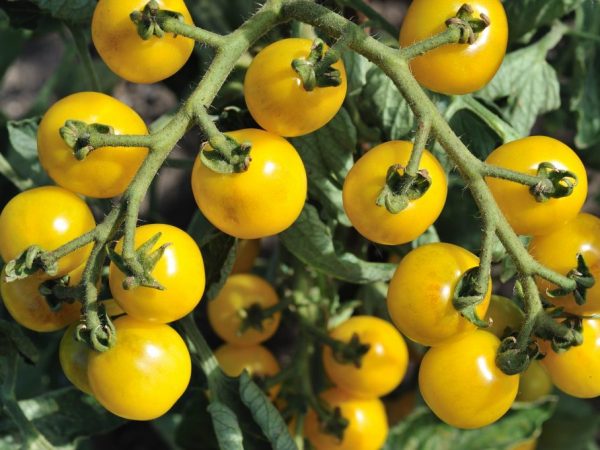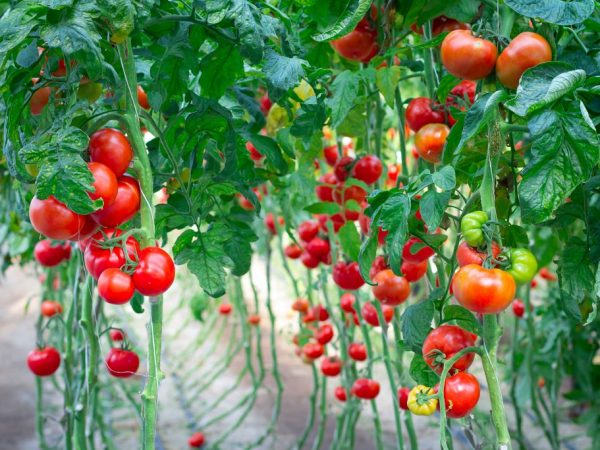Indicators of tomato productivity from one bush
Tomatoes are considered one of the most popular vegetable crops. To get a high-quality and large harvest of tomatoes, it is necessary to choose the right variety for certain growing conditions and carefully care for the seedlings. What is the yield of a tomato from one bush, depending on the specific characteristics of the vegetable? Is it possible to increase the indicator in this area without harming the fruit?

Indicators of tomato productivity from one bush
What affects the yield
Care and hard work do not always help the farmer to get the desired profit from the vegetable garden. It happens that the same variety of tomatoes bears fruit differently from different owners. It depends on the following factors:
- genetic and geographical characteristics of the variety;
- soil fertility;
- seedling quality;
- the climate of the area;
- timely watering;
- fertilizers and feeding;
- tying up;
- insect pest control.
Before settling on a particular variety of tomatoes, you should consult with gardeners growing plants in the same area. It is advisable to focus on the numbers indicated on the seed packages.
Yield indicators
There are standard indicators of the yield of tomatoes from the garden. Approximate figures from one bush per season, subject to the established recommendations:
- early maturing undersized determinant - 1-5 kg;
- tall indeterminate - 5-10 kg or more (in a greenhouse);
- large-sized pink tomatoes - 8-16 kg.
Tatiana Orlova (Candidate of Agricultural Sciences):
As a rule, the average yield of the given plant is indicated on the seed bag. It may be higher or lower than the stated figures, but still gives an idea of the true yield. The average weight of 1 fruit is also indicated.
High-yielding varieties

The choice of high-yielding varieties is great
- medium-sized variety Intuition F1, unpretentious and resistant to fungus, brings 10-12 kg per bush;
- multi-colored varieties (Goldfish, Black Prince, Zephyr) - up to 8 kg;
- Emerald apple - up to 10 kg;
- De Barao yellow - up to 15 kg;
- large-fruited red and pink varieties also delight the owners with high rates from both indoor and open ground: Krasnobay is one of the most productive tomatoes, in a good season it gives up to 30 kg from one bush, Giants Novikova and De-Barao - up to 15 kg , Pink giant - up to 12 kg, early Puzata Khata and Rosana are less fertile - up to 10 kg;
- early variety Vitador F1 - 25 kg per 1 sq. m and Kostroma F1 - 18 kg per 1 sq. m.
How to increase yields
For industrial cultivation of fruits, year-round glazed greenhouses are used. Supporters of this particular method can get the maximum amount of harvest.
Fruits in open ground are endangered due to unstable weather conditions and pests, so they may not have time to ripen before the onset of frost. In a greenhouse, the growing period is from 5 to 7 months, which guarantees almost one hundred percent successful formation of ovaries and a harvest.
Tatiana Orlova (Candidate of Agricultural Sciences):
In the open field, light shelters in the form of arcs with non-woven fabric stretched over them will help to extend the harvesting period with the onset of cool weather.
Secrets to Increase Yields:
- You cannot use the same place twice for planting seedlings, do not change the greenhouse soil, do not plant bushes close to each other and provide them with sufficient lighting.
- Timely weeding and loosening of the soil, hilling and mulching are mandatory.
- The first watering should be done infrequently, but use a lot of warm water, gradually increasing the dose.
- Feed with potassium and phosphorus, do not neglect immunomodulators.
- The period of fruit flowering requires increased attention. We must not forget to remove ripe tomatoes in a timely manner, so as not to interfere with new ripening.
Tatiana Orlova (Candidate of Agricultural Sciences):
Tomatoes require a high intensity of sunlight. In those areas of the country in which sunny days and heat are not enough, it is better to allocate southern open slopes for tomatoes. The best soils for tomato are light, humus-rich with a neutral pH reaction. The plant removes a large amount of nutrients from the soil. Most of all it takes out potassium, then nitrogen. Tomato takes out phosphorus 5 times less than potassium, but it is difficult to find a plant that is more demanding for assimilable phosphorus, which is mainly accumulated in fruits.
Conclusion
This is a general list of recommendations on how to increase your tomato yield. You should also take into account the individual characteristics of each of the varieties. Only with proper care can a high yield be achieved.



